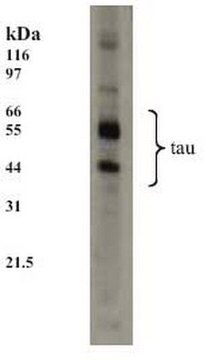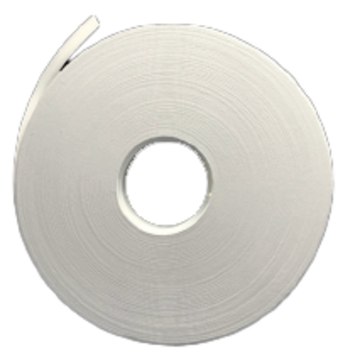S802S-05A
Human Preadipocytes: HPAd: Pre-Screened for Adipogenesis Signaling, adult subcutaneous
Iniciar sesiónpara Ver la Fijación de precios por contrato y de la organización
About This Item
UNSPSC Code:
41106514
NACRES:
NA.81
Productos recomendados
biological source
human adipose tissue
Quality Level
packaging
pkg of 500,000 cells
manufacturer/tradename
Cell Applications, Inc
growth mode
Adherent
karyotype
2n = 46
morphology
adipocyte
technique(s)
cell culture | mammalian: suitable
relevant disease(s)
diabetes; obesity; cardiovascular diseases
shipped in
dry ice
storage temp.
−196°C
General description
Lot specific orders are not able to be placed through the web. Contact your local sales rep for more details.
Most research in adipocyte biology was conducted in mouse 3T3-L1 cell lines. It has been impossible to use human adipocytes because they die within 24 hours after isolation. To facilitate the study of human adipocyte biology, primary Human Preadipocytes (HPAd) have been derived from human subcutaneous adipose tissue at various sites and adipose depot on the heart. These fibroblast-like precursor cells are cryopreserved at the end of primary culture and can be propagated two passages prior to differentiating into Human Adipocytes (HAd). Complete differentiation can be easily achieved through the use of Adipocyte Differentiation Medium. Mature HAd are expected 10 days after induction of differentiation and should remain healthy and responsive for at least 2 weeks after complete differentiation. Adipose mass can be controlled by inhibition of HPAd differentiation and increase of lypolysis. HAd are ideal cellular models for drug discovery research in the area of obesity, diabetes and cardiovascular diseases.
HPAd have been used in multiple studies investigating the cellular basis of diabetes and obesity, as well as mechanisms of action of various drug candidates. For example, it was shown that interaction between infiltrating monocytes and adipocytes affects production of metalloproteinases and osteopontin, a proinflammatory cytokine, which ultimately leads to development of more adipose tissue and insulin resistance (Samuvel, 2010, 2011). It was further demonstrated that adipocyte differentiation requires activation of Akt1 through the mTORC2-BSTA mechanism, leading to downstream suppression of FoxC2 (Yao, 2013).
Most research in adipocyte biology was conducted in mouse 3T3-L1 cell lines. It has been impossible to use human adipocytes because they die within 24 hours after isolation. To facilitate the study of human adipocyte biology, primary Human Preadipocytes (HPAd) have been derived from human subcutaneous adipose tissue at various sites and adipose depot on the heart. These fibroblast-like precursor cells are cryopreserved at the end of primary culture and can be propagated two passages prior to differentiating into Human Adipocytes (HAd). Complete differentiation can be easily achieved through the use of Adipocyte Differentiation Medium. Mature HAd are expected 10 days after induction of differentiation and should remain healthy and responsive for at least 2 weeks after complete differentiation. Adipose mass can be controlled by inhibition of HPAd differentiation and increase of lypolysis. HAd are ideal cellular models for drug discovery research in the area of obesity, diabetes and cardiovascular diseases.
HPAd have been used in multiple studies investigating the cellular basis of diabetes and obesity, as well as mechanisms of action of various drug candidates. For example, it was shown that interaction between infiltrating monocytes and adipocytes affects production of metalloproteinases and osteopontin, a proinflammatory cytokine, which ultimately leads to development of more adipose tissue and insulin resistance (Samuvel, 2010, 2011). It was further demonstrated that adipocyte differentiation requires activation of Akt1 through the mTORC2-BSTA mechanism, leading to downstream suppression of FoxC2 (Yao, 2013).
- Instead of protecting from hyperglycemia-induced ER stress, like it does in other cells, in adipocytes a bioactive, endogenously produced compound taurine was shown to modulate the expression of adipokines under inflammatory conditions by inhibiting the STAT-3 signaling pathway (Kim, 2013a,c), and to inhibit differentiation of preadipocytes into adipocytes (Kim, 2013b). Additionally, FGF21, which leads to reduction of body weight in animal models of obesity, was shown to act by modulating gene expression, phosphorylating Frs2a, Erk1/2, and Mypt1 (Muise, 2013) and by increasing oxidative capacity of adipocytes via AMPK–SIRT1–PGC1a cascade (Chau, 2010). Similarly, atrial natriuretic peptide (ANP) was shown to regulate lipid catabolism and reduce insulin resistance in HPAd by activating AMPK (Souza, 2011).
- HPAd were also used to study adipocytokines in normal pregnancy and pregnancy-induced hypertension (Naruse, 2011), and to investigate the anti-obesity and hypolipidaemic properties of lotus seed extract (You, 2013, 2014). Finally, HPAd (along with Human Dermal Fibroblasts) have been used to demonstrate the role of epigenetic modifications in increasing efficiency of iPS reprogramming (Rim, 2012).
Cell Line Origin
Adipose Tissue
Application
Drug Discovery
Components
Preadipocyte Cell Basal Medium that contains 20% FBS and 5% DMSO
Preparation Note
- 2nd passage, >500,000 cells in Preadipocyte Cell Basal Medium that contains 20% FBS and 5% DMSO
- Can be cultured 2 passages before differentiation into Had
Subculture Routine
Please refer to the HPAd Culture Protocol.
Disclaimer
RESEARCH USE ONLY. This product is regulated in France when intended to be used for scientific purposes, including for import and export activities (Article L 1211-1 paragraph 2 of the Public Health Code). The purchaser (i.e. enduser) is required to obtain an import authorization from the France Ministry of Research referred in the Article L1245-5-1 II. of Public Health Code. By ordering this product, you are confirming that you have obtained the proper import authorization.
Storage Class
11 - Combustible Solids
wgk_germany
WGK 3
flash_point_f
Not applicable
flash_point_c
Not applicable
Certificados de análisis (COA)
Busque Certificados de análisis (COA) introduciendo el número de lote del producto. Los números de lote se encuentran en la etiqueta del producto después de las palabras «Lot» o «Batch»
¿Ya tiene este producto?
Encuentre la documentación para los productos que ha comprado recientemente en la Biblioteca de documentos.
Nuestro equipo de científicos tiene experiencia en todas las áreas de investigación: Ciencias de la vida, Ciencia de los materiales, Síntesis química, Cromatografía, Analítica y muchas otras.
Póngase en contacto con el Servicio técnico






